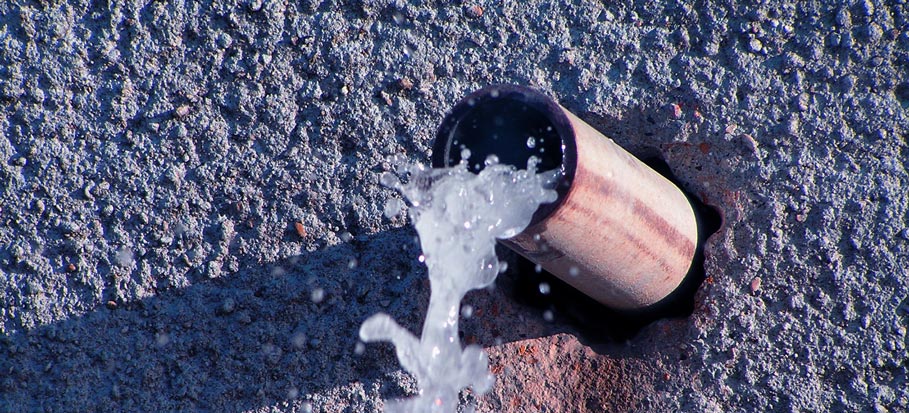How do you actually feel in regards to Locating water leaks?

Early detection of leaking water lines can minimize a possible disaster. Some little water leaks might not be visible.
1. Take A Look At the Water Meter
Every residence has a water meter. Checking it is a surefire way that aids you uncover leaks. For beginners, shut off all the water resources. Guarantee no person will flush, make use of the tap, shower, run the cleaning device or dish washer. From there, go to the meter and watch if it will change. Given that no person is utilizing it, there should be no motions. If it relocates, that suggests a fast-moving leak. If you discover no changes, wait an hour or 2 as well as check back again. This means you might have a slow-moving leakage that could also be underground.
2. Check Water Intake
Assess your water costs and track your water consumption. As the one paying it, you must discover if there are any kind of disparities. If you spot sudden changes, regardless of your consumption coinciding, it implies that you have leakages in your plumbing system. Remember, your water expense ought to drop under the very same array on a monthly basis. An unexpected spike in your expense indicates a fast-moving leakage.
Meanwhile, a stable increase each month, despite having the same routines, shows you have a slow-moving leakage that's additionally slowly intensifying. Call a plumber to extensively examine your home, particularly if you really feel a warm area on your floor with piping underneath.
3. Do a Food Coloring Examination
When it comes to water consumption, 30% comes from toilets. If the shade somehow infiltrates your bowl throughout that time without flushing, there's a leak in between the storage tank and also bowl.
4. Asses Outside Lines
Do not neglect to examine your outside water lines too. Test spigots by attaching a yard hose pipe. Must water seep out of the link, you have a loose rubber gasket. Change this and ensure all links are tight. If you have actually obtained an automatic sprinkler, it will certainly help get it properly analyzed and also preserved every year. One little leakage can lose lots of water and also spike your water costs.
5. Assess the circumstance as well as inspect
House owners need to make it a behavior to check under the sink counters as well as even inside cupboards for any type of bad odor or mold growth. These 2 red flags suggest a leakage so timely attention is needed. Doing routine inspections, even bi-annually, can save you from a major issue.
More notably, if you know your home is currently old, keep a watchful eye on your heaters, hose pipes, pipes and so on. Look for stainings and deteriorating as most appliances as well as pipelines have a life span. They will certainly also naturally degrade due to tear and wear. If you think dripping water lines in your plumbing system, don't wait for it to rise. Call a professional plumber today so you do not end up with an awful mess in your house.
Early detection of dripping water lines can mitigate a possible disaster. Some little water leaks may not be visible. Checking it is a surefire means that aids you discover leaks. One small leak can waste heaps of water and also surge your water costs.
If you think leaking water lines in your plumbing system, don't wait for it to intensify.
WARNING SIGNS OF WATER LEAKAGE BEHIND THE WALL
PERSISTENT MUSTY ODORS
As water slowly drips from a leaky pipe inside the wall, flooring and sheetrock stay damp and develop an odor similar to wet cardboard. It generates a musty smell that can help you find hidden leaks.
MOLD IN UNUSUAL AREAS
Mold usually grows in wet areas like kitchens, baths and laundry rooms. If you spot the stuff on walls or baseboards in other rooms of the house, it’s a good indicator of undetected water leaks.
STAINS THAT GROW
When mold thrives around a leaky pipe, it sometimes takes hold on the inside surface of the affected wall. A growing stain on otherwise clean sheetrock is often your sign of a hidden plumbing problem.
PEELING OR BUBBLING WALLPAPER / PAINT
This clue is easy to miss in rooms that don’t get much use. When you see wallpaper separating along seams or paint bubbling or flaking off the wall, blame sheetrock that stays wet because of an undetected leak.
BUCKLED CEILINGS AND STAINED FLOORS
If ceilings or floors in bathrooms, kitchens or laundry areas develop structural problems, don’t rule out constant damp inside the walls. Wet sheetrock can affect adjacent framing, flooring and ceilings.
https://www.servicemasterbyzaba.com/blog/how-to-detect-water-leakage-in-walls/

Do you enjoy more info about Locating water leaks? Try to leave a review further down. We would be pleased to know your reactions about this write-up. We hope that you visit us again in the near future. Those who enjoyed reading our blog entry please don't forget to pass it around. Thanks a bunch for your time. Don't forget to check our blog back soon.